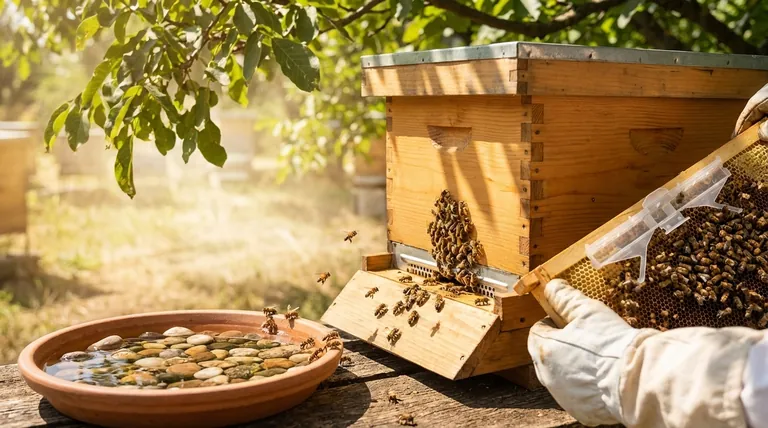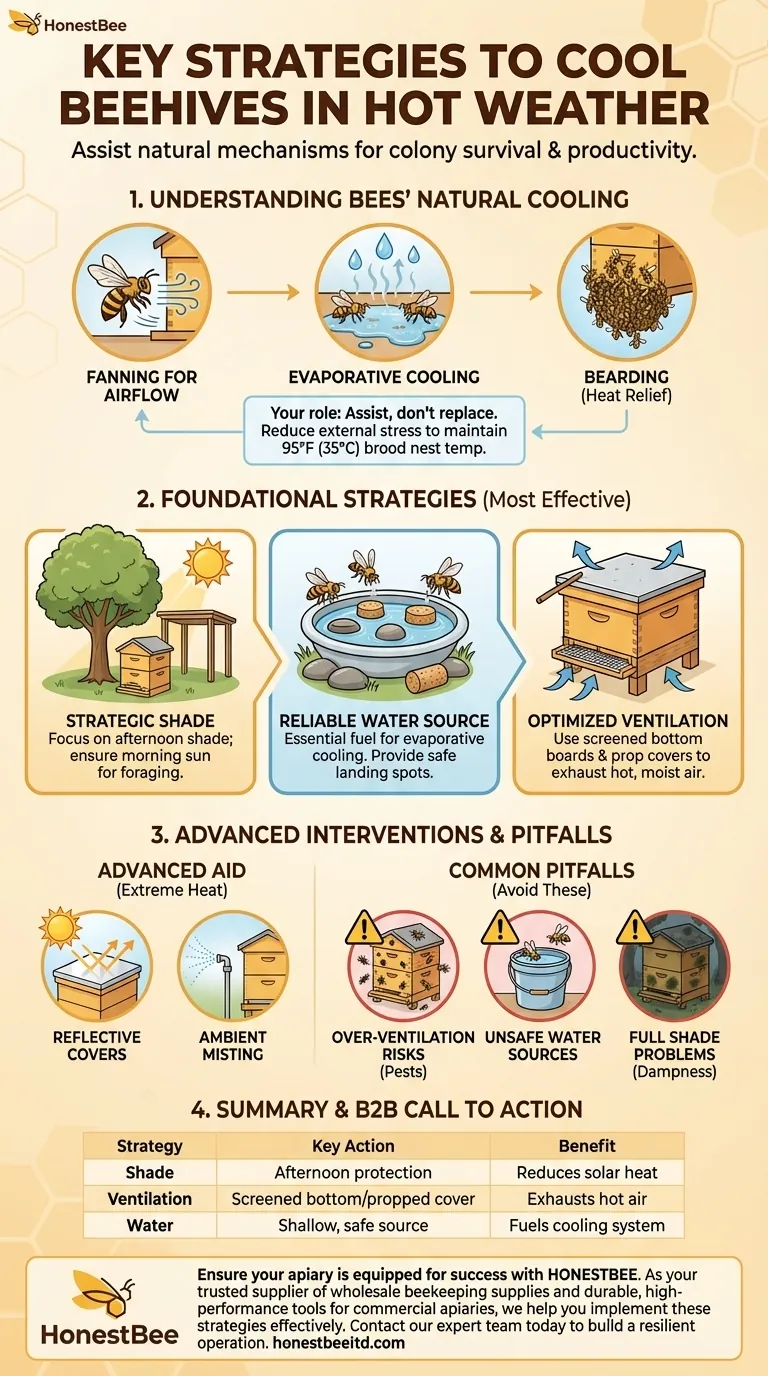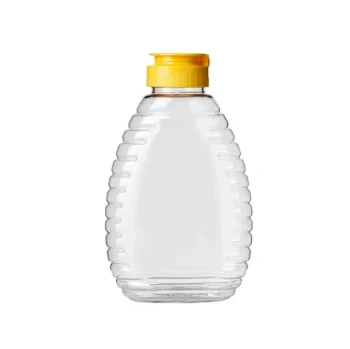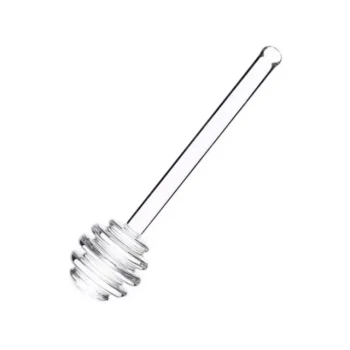The most effective strategies to cool a beehive are providing shade, ensuring ample ventilation, and maintaining a constant and safe water source. These foundational steps reduce the thermal load on the colony, allowing the bees to manage their internal temperature more efficiently without exhausting their resources.
Your primary role is not to actively cool the hive yourself, but to assist the colony’s highly effective natural cooling mechanisms. By reducing external heat stress, you empower your bees to maintain the critical 95°F (35°C) brood nest temperature required for their survival and productivity.

Understanding the Bees' Natural Cooling System
Before intervening, it's crucial to understand how a honeybee colony manages heat. Bees are masters of thermoregulation, and your efforts should complement their natural behavior.
Fanning for Airflow
Worker bees position themselves at the hive entrance and throughout the hive, fanning their wings in unison. This creates a coordinated airflow, pulling cool, fresh air in and expelling hot, stale air.
Evaporative Cooling
Forager bees collect water and spread thin layers of it inside the hive. The fanning bees then evaporate this water, creating a powerful cooling effect, much like a biological swamp cooler.
Bearding
During extreme heat, a large number of bees will congregate on the outside of the hive in a "beard." This behavior reduces the number of heat-producing bodies inside the hive, alleviating internal temperature and congestion. While alarming to new beekeepers, it is a normal and effective cooling strategy.
Foundational Strategies for Heat Management
These are the most critical and impactful steps you can take to protect your hives during hot weather.
Strategic Hive Placement and Shade
The location of your hive is your first and best line of defense. Direct, intense afternoon sun can quickly overwhelm a colony.
Position hives to receive morning sun, which encourages foraging, but provide shade during the hottest part of the day (from noon onward). This can be achieved with deciduous trees, sheds, or purpose-built shade structures.
Ensuring a Reliable Water Source
Water is not just for drinking; it is the fuel for the bees' evaporative cooling system. A colony can use over a gallon of water on a single hot day.
Provide a shallow water source with landing spots like stones, marbles, or corks to prevent bees from drowning. A birdbath or a dedicated water station within 50-100 feet of the hive is ideal.
Optimizing Hive Ventilation
Proper airflow is essential for removing excess heat and humidity generated by the colony. Trapped, hot air makes it impossible for the bees to cool the brood nest.
A screened bottom board is one of the most effective tools for ventilation, allowing hot air to escape and providing a draft of cooler air from below. You can also slightly prop up the outer cover with small shims or sticks to create an upper vent.
Advanced Cooling Interventions
For regions with extreme or prolonged heat waves, these supplemental techniques can provide additional relief.
Using Vented or Reflective Covers
Standard dark-colored hive roofs can absorb a tremendous amount of solar radiation. Painting your outer covers white or a light color can reflect a significant amount of this heat.
Specialized vented or aluminum-covered telescoping covers are also commercially available. These designs help dissipate heat before it can penetrate the rest of the hive.
Misting Systems
A gentle mist directed near but not directly on the hive can lower the ambient temperature around the apiary. This allows the bees to draw in cooler air.
However, be cautious not to soak the hive itself, as this can chill the brood and raise internal humidity to dangerous levels.
Common Pitfalls to Avoid
Well-intentioned actions can sometimes have negative consequences. Understanding the trade-offs is key to effective management.
The Risk of Over-Ventilation
While crucial in summer, excessive ventilation from screened bottom boards or large upper entrances can be detrimental in cooler weather. It can also create an easy access point for pests like wax moths or small hive beetles if the colony is not strong enough to defend the entire space.
Unsafe Water Sources
Bees will drown in open water. Always ensure your water source has ample, textured surfaces for the bees to land on safely, drink, and take off again.
The Problem with Full Shade
While afternoon shade is critical, keeping a hive in full, dense shade all day can be problematic. It can lead to a damp hive environment, promote mold and mildew, and may reduce the colony's motivation for early morning foraging.
Making the Right Choice for Your Climate
Your approach should be tailored to your specific environmental conditions and the strength of your colony.
- If your primary focus is managing extreme, dry heat: Prioritize a large, reliable water source and afternoon shade. A screened bottom board is essential.
- If your primary focus is managing hot and humid weather: Emphasize ventilation above all else. Propping the outer cover and using a screened bottom board will help exhaust moist, hot air.
- If you are a beginner looking for the most critical first steps: Focus entirely on hive placement (afternoon shade) and providing a safe, consistent water source.
Ultimately, your goal is to work in partnership with your bees, creating an environment where their remarkable natural abilities can shine.
Summary Table:
| Strategy | Key Action | Primary Benefit |
|---|---|---|
| Shade | Provide afternoon shade via trees or structures. | Reduces direct solar heat absorption. |
| Ventilation | Use screened bottom boards and prop open the outer cover. | Allows hot, humid air to escape the hive. |
| Water Source | Supply a shallow, safe water source with landing spots. | Fuels the bees' natural evaporative cooling system. |
| Advanced Aid | Consider reflective covers or ambient misting. | Supplemental cooling for extreme heat conditions. |
Ensure your apiary is equipped for success with HONESTBEE.
Extreme heat can threaten colony health and honey production. As a trusted supplier of wholesale beekeeping supplies and equipment to commercial apiaries and distributors, HONENTBEE provides the durable, high-performance tools you need to implement these cooling strategies effectively—from screened bottom boards to essential hive components.
Let's discuss your specific needs and scale. Contact our expert team today to build a more resilient and productive operation.
Visual Guide

Related Products
- Reusable Clear Small Hive Beetle Traps for Beehives Beetle Trapping Tools
- Langstroth Solid Bottom Board for Beekeeping
- Heavy-Duty Galvanized Steel W-Style Pallet Clip
- Stainless Steel Bee Hive Frame Wire for Beekeeping
- Multi-Functional Rotary Hive Entrance Disc for Beekeeping
People Also Ask
- What are small hive beetles and where are they not indigenous? Protect Your Apiary from This Invasive Pest
- What is the best time to use beetle traps? Master the Spring Strategy for Effective Hive Protection
- What are the advantages of handheld beetle blasters and traps? Simple, Chemical-Free Hive Protection
- How do Beetle Blasters trap adult beetles? A Simple, Non-Chemical Pest Control Solution
- What is the recommended number of beetle traps per hive? Optimize Your Hive's Beetle Defense



















